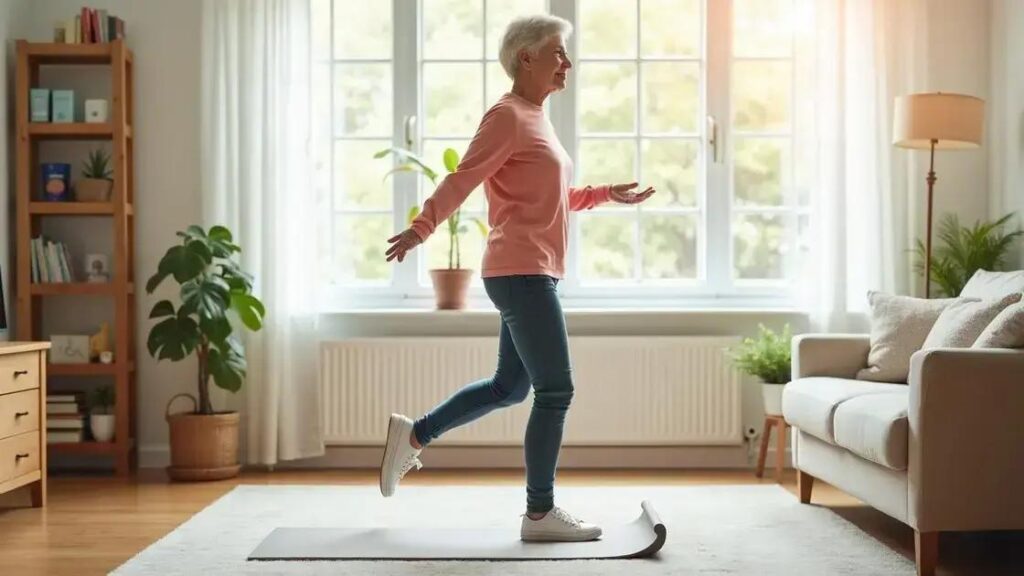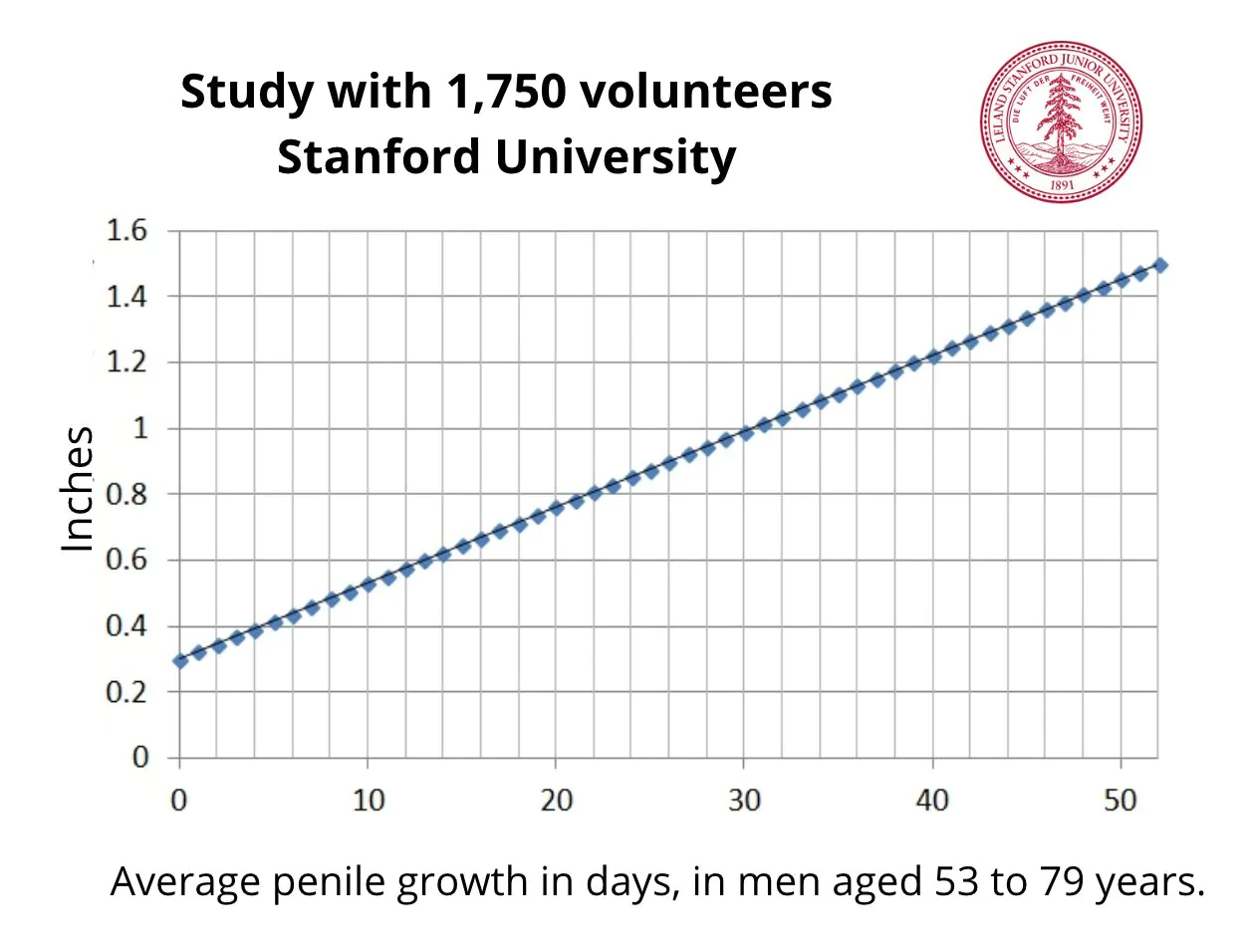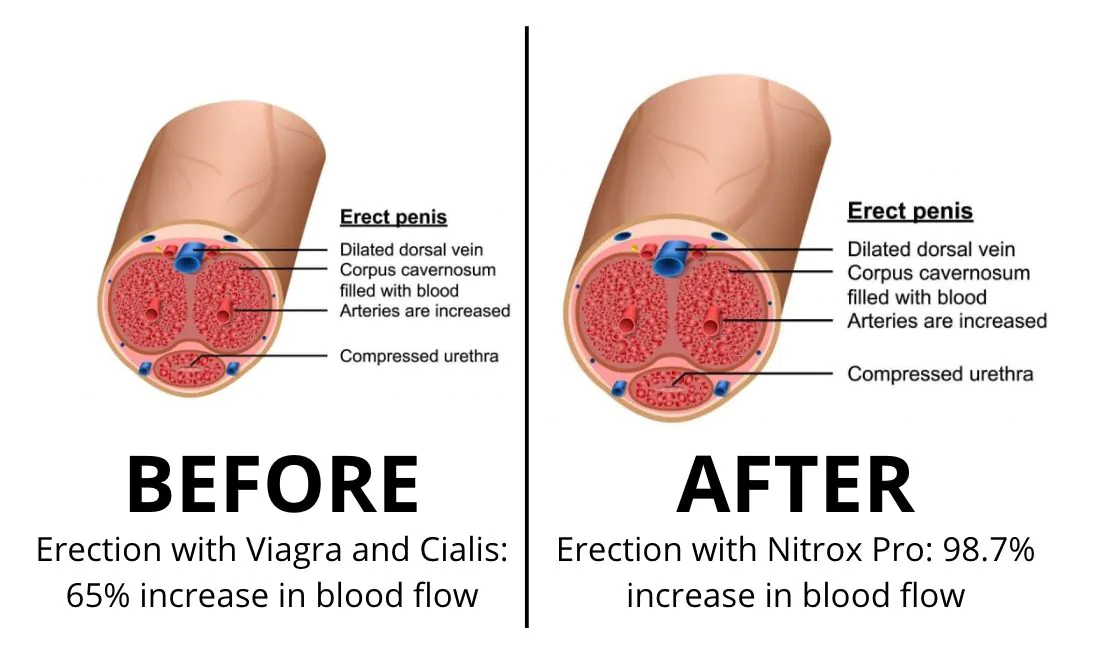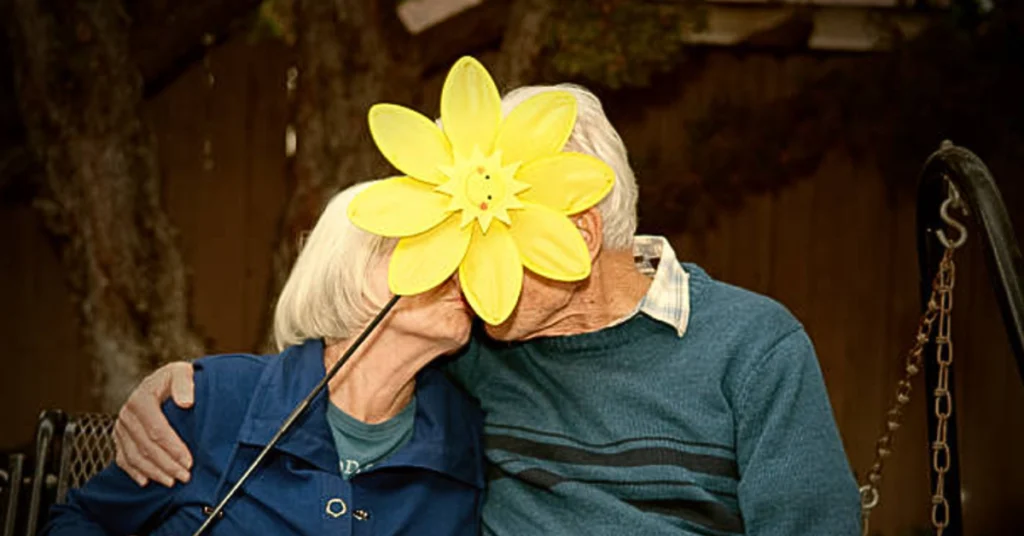To prevent falls and injuries in your 50s, focus on understanding risks, engaging in essential exercises for balance and strength, making important home modifications, and adopting lifestyle changes such as regular physical activity and a healthy diet.
As we age, falls become a significant concern, especially for those in their 50s. Learning how to prevent falls and injuries in your 50s is crucial for maintaining independence and a high quality of life. In this article, we will explore the risks associated with falls, share essential exercises to enhance your balance and strength, discuss home modifications that can help prevent accidents, and suggest lifestyle changes to keep you safe and active.
Understanding the Risks of Falls After 50
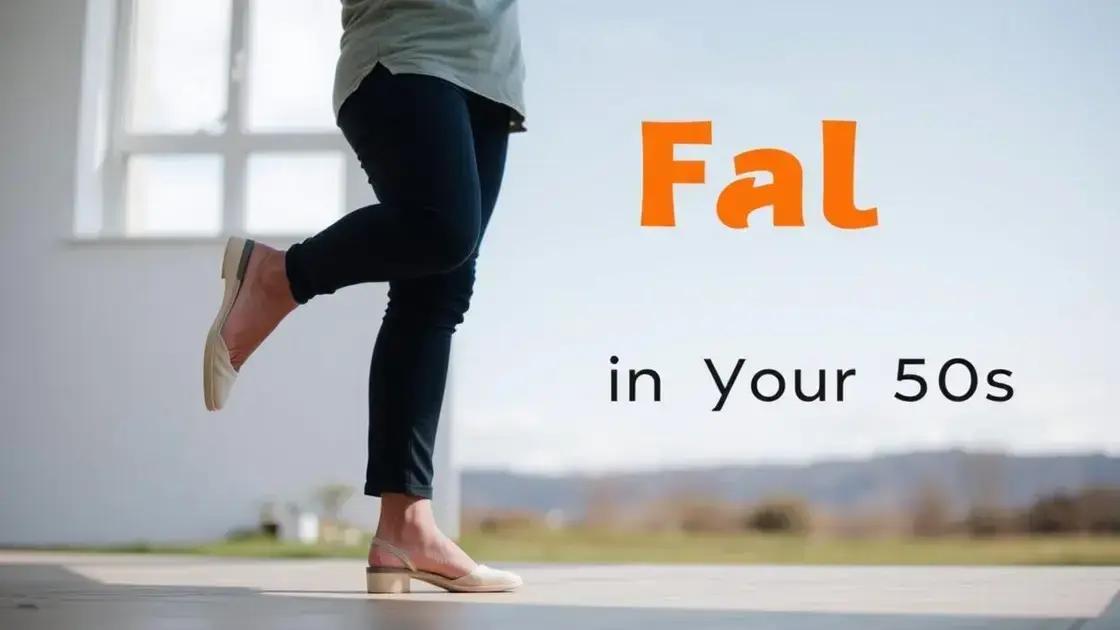
As people reach their 50s, understanding the risks of falls is vital. Age-related physical changes can affect balance, strength, and coordination. These changes can make you more susceptible to falls. Common factors contributing to falls include:
- Muscle Weakness: Losing muscle mass and strength can affect stability.
- Vision Changes: Difficulty seeing in low light or distinguishing depth may lead to missteps.
- Health Conditions: Conditions such as arthritis, diabetes, or previous injuries can impact mobility.
- Medications: Some medications can cause dizziness or drowsiness, increasing fall risk.
Being aware of these risks can help you take proactive steps to minimize your chances of falling. Falls can lead to serious injuries such as fractures or head injuries, which can drastically affect your quality of life. Knowing your individual risk factors allows you to implement strategies that enhance your safety.
By focusing on the factors that contribute to falls, you can work on preventing them. Regular check-ups with your healthcare provider can keep you informed about your health and any changes that might affect your balance and strength.
Essential Exercises for Balance and Strength
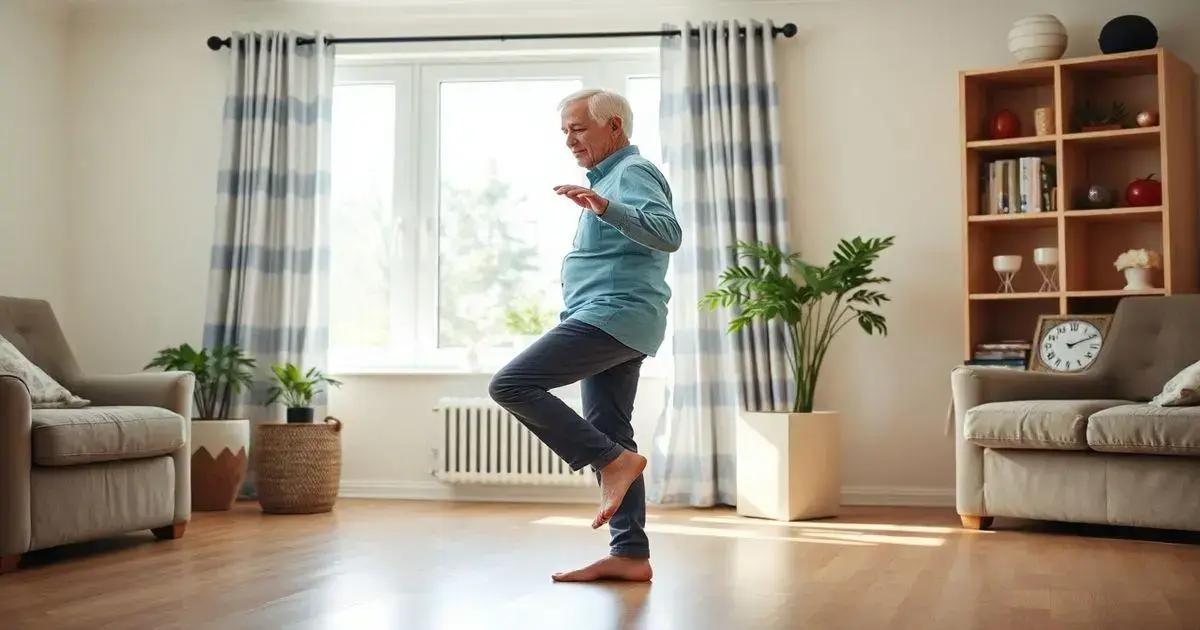
To maintain balance and strength in your 50s, incorporating specific exercises into your routine is essential. These exercises not only improve stability but also reduce the risk of falls. Here are some essential exercises that can help:
- Heel-to-Toe Walk: This exercise improves balance. Walk in a straight line, placing the heel of one foot directly in front of the toes of the other foot. Try to keep your balance.
- Chair Stand: This exercise strengthens leg muscles. Sit in a chair and stand up without using your hands. Sit back down and repeat for 10-15 times.
- Single Leg Stands: Stand on one leg for 10 seconds. Switch legs and repeat. This will help improve your stability.
- Side Leg Raises: Stand and hold onto a chair for support. Lift one leg to the side and hold for a moment before lowering it. Repeat 10-15 times on each side.
- Calf Raises: Stand up straight and slowly lift your heels off the ground. Hold for a few seconds before lowering. This strengthens the calves and improves balance.
- Tai Chi: Engaging in Tai Chi offers a gentle way to enhance balance, coordination, and flexibility. Consider joining a class in your area.
Perform these exercises regularly for the best results. Aim for at least 30 minutes of exercise most days of the week, gradually increasing the intensity as you build strength and confidence.
Home Modifications for Fall Prevention

Making home modifications can significantly help reduce the risk of falls, especially for individuals in their 50s. Here are some essential changes you can make to your home:
- Remove Clutter: Keep walkways clear of obstacles such as shoes, bags, and other items. This reduces tripping hazards.
- Install Handrails: Place handrails on both sides of stairs and along hallways. This provides support when moving around the home.
- Enhance Lighting: Use bright light bulbs and ensure all areas of your home are well-lit, especially hallways and stairs. Consider installing night lights for better visibility during the night.
- Non-Slip Flooring: Choose non-slip materials for flooring. Adding non-slip mats in the bathroom, kitchen, and entryways can prevent slips.
- Bathroom Modifications: Install grab bars in the shower and by the toilet. Use a shower chair and non-slip mats to enhance safety during bathing.
- Furniture Arrangement: Arrange furniture to create clear paths. Avoid low furniture that can obstruct walking spaces.
- Elevated Toilet Seats: Consider using an elevated toilet seat to make it easier to sit down and stand up, reducing strain and risk of falls.
Implementing these modifications can create a safer environment, allowing you to move around your home with confidence.
Lifestyle Changes to Stay Injury-Free

Making lifestyle changes can significantly lower the risk of falls and injuries as you age. Here are some lifestyle changes to consider:
- Stay Active: Engage in regular physical activity. Aim for at least 150 minutes of moderate exercise each week, such as walking, swimming, or cycling.
- Maintain a Healthy Diet: Eating a balanced diet rich in vitamins and minerals supports bone health and overall well-being. Consider foods high in calcium and vitamin D.
- Stay Hydrated: Drink plenty of water throughout the day. Dehydration can cause dizziness, leading to a higher risk of falls.
- Regular Health Check-ups: Schedule regular visits to your doctor for health assessments. Keep track of any medications that may affect balance or coordination.
- Quit Smoking: If you smoke, seek support to quit. Smoking can affect bone health and overall physical fitness.
- Limit Alcohol Consumption: Reducing alcohol intake can help maintain better balance and coordination. Aim for no more than one drink per day.
- Practice Mindfulness: Stress can affect your balance. Practicing mindfulness or meditation can help you remain calm and focused.
Incorporating these lifestyle changes can lead to a healthier, more active life while reducing the chances of falls and injuries.
In Summary: Staying Safe in Your 50s
Preventing falls and injuries in your 50s is essential for maintaining independence and a high quality of life. By understanding the risks associated with falls, incorporating essential exercises, making home modifications, and implementing helpful lifestyle changes, you can significantly reduce your risk of injury.
Remember, it’s never too late to start taking steps to improve your balance and strength, create a safer living environment, and embrace a healthier lifestyle. Small changes can lead to big results, ensuring that you stay active and safe as you age.
By prioritizing your health and safety, you’re not only enhancing your life today but also laying the groundwork for a healthier future.
FAQ – Frequently Asked Questions about Preventing Falls and Injuries in Your 50s
Why is it important to prevent falls in my 50s?
Preventing falls is crucial for maintaining your independence and quality of life as you age. Falls can lead to serious injuries that may impact your ability to perform daily tasks.
What exercises can help improve balance and strength?
Exercises like heel-to-toe walking, chair stands, single leg stands, and tai chi can enhance balance and strength, reducing the risk of falls.
What home modifications can I make to prevent falls?
You can remove clutter, install handrails, improve lighting, and use non-slip mats in your home to create a safer environment.
What lifestyle changes can I implement to stay injury-free?
Staying active, eating a balanced diet, staying hydrated, and limiting alcohol are important changes that contribute to preventing falls and staying healthy.
How often should I exercise to prevent falls?
Aim for at least 150 minutes of moderate exercise each week, which can help improve your balance and overall health.
Should I consult a doctor before starting an exercise routine?
Yes, it is advisable to talk to your healthcare provider before starting any new exercise program, especially if you have existing health conditions.

